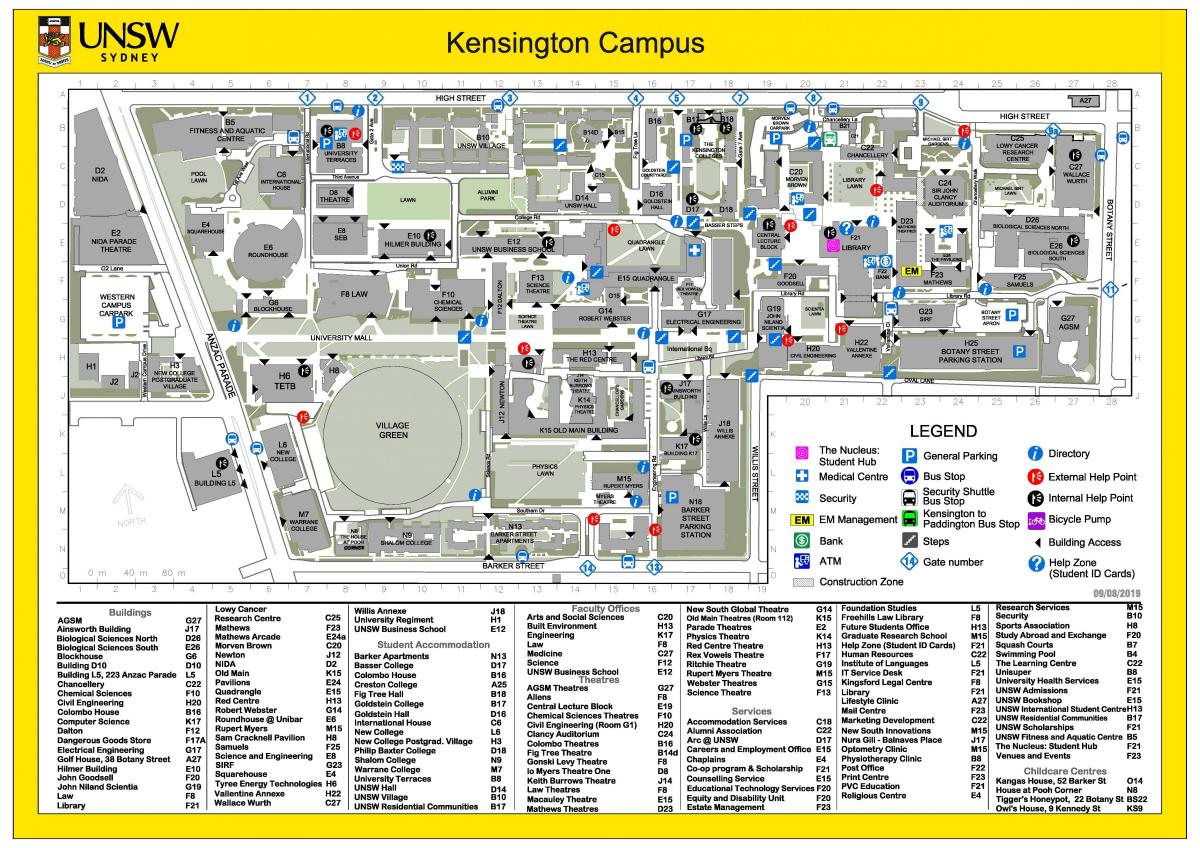search
Unsw map
Unsw campus map. Unsw map (Australia) to print. Unsw map (Australia) to download. The University of New South Wales (UNSW) (informally New South), is a research-focused university based in Kensington, a suburb in Sydney, New South Wales, Australia as you can see in the unsw map. The university is a member of the "Group of Eight" coalition of leading Australian universities, and is also a founding member of Universitas 21, an international network of leading research-intensive universities. Despite its relatively short history, founded in 1949, UNSW is recognised as one of Australia’s leading teaching and research institutions, and has developed a strong reputation in a number of fields. Graduates from the university are held in high regard by employers and receive some of the highest starting salaries in comparison to other universities in Australia. As a result, greater than half of New South Wales top HSC students each year consistently make UNSW their first preference; that is, more than all other universities in the state combined.
UNSW currently has approximately 46,000 students studying in 600 undergraduate and postgraduate academic programs as its shown in the unsw map. Over 5,000 full-time staff work in its 76 schools, 69 research centres, six institutes, four teaching hospitals, eight residential colleges and many administrative departments. Aside from the main campus in Kensington, UNSW has other campuses located throughout Sydney, including the College of Fine Arts campus in Paddington. In addition, the affiliated Australian Defence Force Academy is situated in Canberra. The University, originally named the "New South Wales University of Technology", gained its statutory status through the enactment of New South Wales University of Technology Act 1949 (NSW) by Parliament of New South Wales in Sydney in 1949. The idea of founding the University originated from the crisis demands of World War II, during which the nation attention was drawn to the critical role that science and technology played in transforming an agricultural society into a modern and industrial one.
The unsw is governed by Council of 22 members including parliamentary and ex-officio members, members elected by staff, students and graduates of the University, and members appointed by the Minister for Education or by Council itself as its mentioned in the unsw map. It is responsible for acting on the University behalf to promote its objectives and interests. The governance of universities has come under increasing scrutiny nationally in recent years, and UNSW and its Council are committed to meeting this scrutiny by demonstrating the highest standards. The principal academic body is the Academic Board which receives advice on academic matters from the Faculties, College (Australian Defence Force Academy), and the Boards of Studies. It is responsible for academic policy setting, academic strategy via its eight standing committees, approval and delivery of programs, and academic standards. The Board comprises 56 members, including the Vice-Chancellor, members of the Executive Team, Deans and Faculty Presiding Members, 24 members elected from the academic staff and four from the student body. Membership also includes ‘such other persons’ approved by Council.
The main UNSW campus is situated in Kensington, Sydney (see the unsw map). Two of the University faculties are situated elsewhere. The College of Fine Arts, is located in the inner suburb of Paddington. The Australian Defence Force Academy is situated in Canberra. The University also has additional campuses and field stations at Randwick, Coogee, Botany, Dee Why, Cowan, Manly Vale, Fowlers Gap and Bankstown Airport. The main UNSW campus is divided geographically into two areas: upper campus and lower campus. The site of the lower campus was vested in the university in two lots in December 1952 and June 1954, while the upper campus was vested in the university in November 1959. These two are separated mainly by an elevation rise between the quadrangle and the Scientia building. It takes roughly fifteen minutes to walk from one extreme to the other. The University has a number of residential colleges, including: Philip Baxter College, Basser College, Goldstein College, New College, Warrane College, International House, Shalom College and Creston College.


